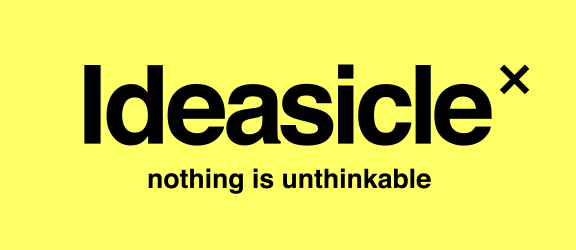Turning the Creative Brief Into A Living Organism
In much of the advertising world, the creative brief is treated like a static document—a checklist, a rulebook, a set of instructions. But at Ideasicle X, we see it differently. For us, the brief isn’t the final word—it’s the first spark. It ignites the creative process, and while the brief itself doesn’t change during the creative process, its influence on the creative team grows and evolves as the ideas take shape. When approached the right way, a brief doesn’t dictate creative solutions, it fuels them, turning into something dynamic and alive. Here’s what I mean.
The Living Organism of the Creative Brief
While its words remain fixed, the influence of the brief breathes life into the ideation process by offering multiple entry points for inspiration. A strong brief allows the team to pull insights from any section, and the magic happens when each person takes their personal inspirations from it and then runs with them. Sharing these inspirations with the rest of the team effectively “re-briefs” the team with that unique perspective.
“The audience’s problem is X, so what if we…”
“The problem to solve is Y, so what if we…”
That second support point is interesting to me. What if we…”
You get the idea. The brief—top to bottom—becomes a multidimensional springboard that, through human engagement, pushes the creative process forward in unexpected ways.
Now, creative teams typically work in twos—a writer and an art director. Which is great! It’s better than working alone. But imagine four different perspectives colliding against one brief, each pulling insights from different sections.
Four Minds, One Brief
What sets our approach apart is how we bring the brief to life through virtual collaboration. At Ideasicle X, our teams of four experts engage with the brief from different angles, each contributing their unique perspective, talents, and worldviews. This diversity of thought turns the brief into a collaborative, evolving process—a living organism of influence.
When four creative minds engage with a brief, something extraordinary happens. The ideas don’t just add up—they multiply. As each team member pulls unique inspiration from different sections of the brief, the rest of the team is provoked into seeing the brief through new lenses. Ideas build upon ideas, and what starts as one person’s spark quickly turns into a firestorm of creativity in the other three. In this way, the brief becomes a living, breathing part of the ideation process—not just a document, but the connective tissue between the collaborators.
Now let’s look at the various sections of a typical brief and unpack each section’s potential.
The Anatomy of a Brief—As We See It
There are many ways to write a brief, but at Ideasicle X, we’ve found that certain elements consistently lead to better ideas. Here’s how we approach it:
The Problem to Be Solved: Clarity on the problem is essential. If we don’t know what we’re solving, how can we solve it creatively? Plus, creative minds love to solve problems, so framing the brief as a problem to be solved motivates the team.
Target Audience: Understanding who we’re speaking to is key, but it’s more than demographics. What drives them? How do they see the world? What motivates their decisions? What is their problem, categorically?
Driving Insight (optional): The deep human truth behind the problem that bridges the gap between understanding the audience and delivering the one key message. This section is sort of a “stage setter” for the one key message.
The One Key Message (optional): What’s the single most important thing this communication needs to say? Depending on the nature of the assignment, we may not need this section (e.g., promotional ideas, go-to-market ideas, etc.), but when you do, keep it succinct and single-minded.
Support Points: These are the facts, the proof-points that back up the key message. But they’re also fertile ground for creativity. Maybe there’s something hidden in one of these points that will spark an unexpected direction. We keep it to three points max, forcing prioritization.
Brand Tone/Personality: How the work should feel—its voice and character. Identifying the tone in 4-5 words gives the team parameters that embody the brand’s spirit. It helps them answer the question, “Would this brand do this idea or not?”
It’s important to eliminate all redundancies within the brief. If it’s an important point, include it once—but don’t repeat it across sections. Also, keep the brief to one page. As Blaise Pascal famously said, “I would have written a shorter letter, but I did not have the time.” A one-page brief forces clarity and efficiency, which in turn fuels creativity. Less is way more.
The Living Brief: A New Way to See the Creative Process
So look at this way. The brief isn’t the “answer” to the marketing problem—it’s the inspiration to find the answer. That’s why we don’t treat the brief like a static script. Instead, we use it as a living influence that ignites creativity across the entire team.
When approached this way, the creative brief elevates off the page and becomes intellectual energy fueling collaboration and connecting creative minds in unpredictable ways.
It helps us say with confidence, “Nothing is unthinkable.”
Will Burns is the Founder & CEO of the revolutionary virtual-idea-generating company, Ideasicle X. He’s an advertising veteran from such agencies as Wieden & Kennedy, Goodby Silverstein, Arnold Worldwide, and Mullen. He was a Forbes Contributor for nine years writing about creativity in modern branding. Sign up for the Ideasicle Newsletter and never miss a post like this. Will’s bio.


